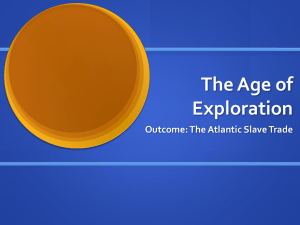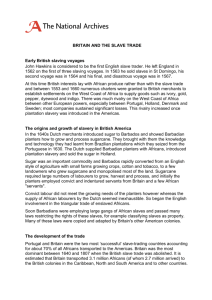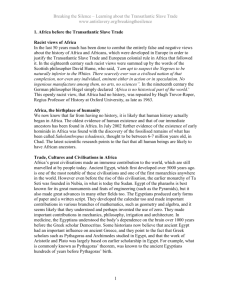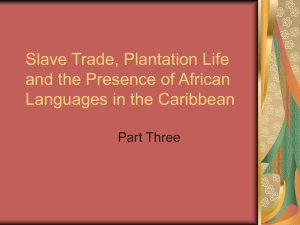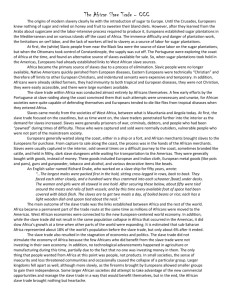The Trans-Atlantic Slave Trade
advertisement
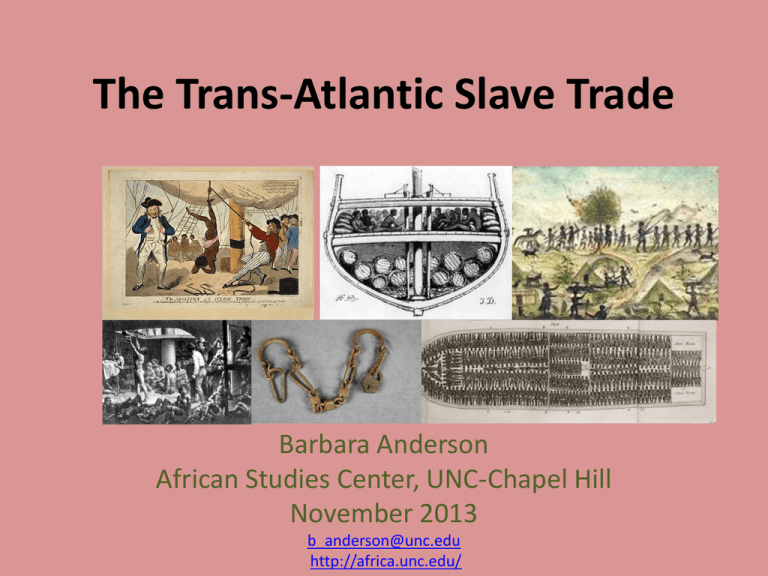
The Trans-Atlantic Slave Trade Barbara Anderson African Studies Center, UNC-Chapel Hill November 2013 b_anderson@unc.edu http://africa.unc.edu/ How did the trans-Atlantic slave trade begin? Why did Europeans choose Africans? Origins of the Trans-Atlantic Slave Trade • Begin with the Age of Exploration—the Portuguese, not Columbus! • African and Middle Eastern science and technology were central • Portuguese first explored the west coast of Africa, looking for GOLD (& Asia) Muslim international trade world ca. 1500. Long-distance trading throughout this area, including slaves European Invasion and Occupation of the Americas begins African enslavement • 1441 Portuguese in West Africa • 1492 Columbus • 1498 Vasco de Gama • 1500 Cabral to Brazil • 1517 Spain gives Portugal 1st Asiento to import African slaves • 1542 only African slavery legal in Spanish colonies WHY DID EUROPEANS NEED SLAVES? SUGAR AND GOLD MONOCULTURE CASH CROPS AND MINING SLAVE EXPORTS FROM AFRICA 1450-1600 376,000 3.1% 1601-1700 1,868,000 16.0 1701-1800 6,133,000 52.4** 1801-1900 3,330,000 28.5 Total 11,698,000 **This is also the century that most Americans can trace their African ancestors to; by 1755 40% of Marylanders were Black. Destination of Slaves Europe 2% Mainland North America (U.S.) 5% Caribbean Brazil Spanish America 42% 38% 13% The “Triangular Trade” Places in the slave trade: Have students research! • • • • • • • • • Liverpool Senegambia Dahomey Kongo Rio de Janeiro Jamaica Cuba Charleston Boston Two examples of Africans enslaved in Maryland in 1730 Ayuba Suleiman Diallo – from Futa Toro/Senegambia – enslaved in Kent County, MD Grandfather of Charles Ball – probably Senegambia – Calvert County, MD http://en.wikipedia.org/wiki/Ayuba_Suleiman http://docsouth.unc.edu/neh/ballslavery/m _Diallo enu.html See esp. pp. 19-24 Diallo and Ball’s Grandfather in MD, both Muslims from Senegambia 1700s “Upon our Talking and making Signs to him, he wrote a Line or two before us, and when he read it, pronounced the Words Allah and Mahommed; by which, and his refusing a Glass of Wine we offered him, we perceived he was a Mahometan, but could not imagine of what Country he was, or how he got thither; for by his affable Carriage, and the easy Composure of his Countenance, we could perceive he was no common Slave.” http://docsouth.unc.edu/neh/blu ett/bluett.html [The night that my father was to be sold away], “about midnight, my grandfather silently repaired to the cabin of my father, a distance of about three miles, aroused him from his sleep, made him acquainted with the extent of his danger, gave him a bottle of cider and a small bag of parched corn, and then praying to the God of his native country to protect his son, enjoined him to fly from the destruction which awaited him. In the morning, the Georgian [slave trader] could not find his newly purchased slave, who was never seen or heard of in Maryland from that day.” [Fifty Years in Chains] Why did Africans sell slaves to Europeans? Were they “selling their own people”? Why did Africans sell slaves to Europeans? • Slavery in most of Africa – (and rest of the world!) • Long-distance trading a long tradition • Demand for European commodities • No racial or national identity, “vertical organization” – Local and/or lineage loyalty • Prisoners of War or other outsiders • Significant African resistance occurred (Queen Nzinga Mbande of Angola), but infrequent European demand for slaves Goree Warehouses in Liverpool How slave trading in Africa developed Europe Goree Island, across from Dakar, Senegal Learning the Trade Capture, coffles, barracoons, factories, branding Middle Passage Arrival in the Americas and Seasoning 17th and 18th Century Virginia/Maryland Tobacco Urban centers throughout the Atlantic Sugar, Hispaniola, 1500s Cotton, French West Indies, 1762 Diamond Mining, Brazil, 1770s Sugar boiling, Trinidad, 1836 Rum distillery, Antigua, 1823 Tobacco in Cuba, 1850
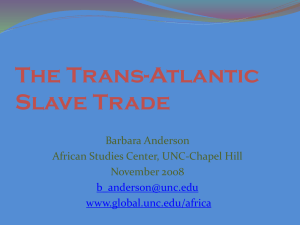


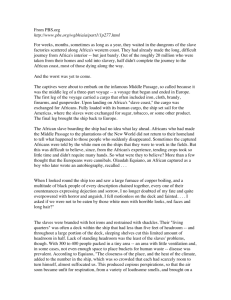

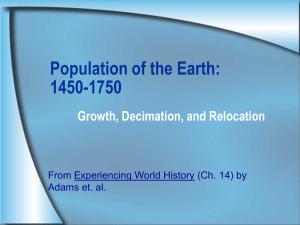

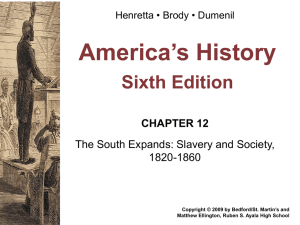
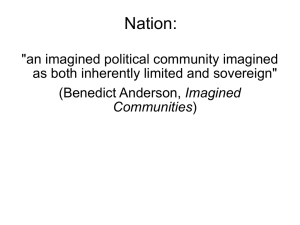


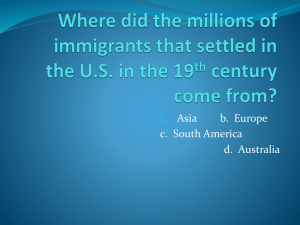
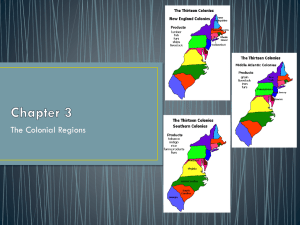

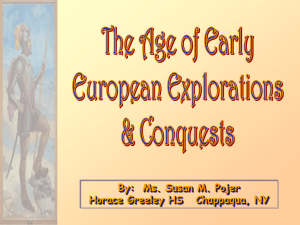
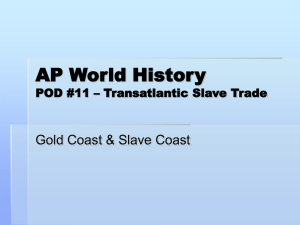
![Black People in Colonial North America (1526-1763) [Part II]](http://s2.studylib.net/store/data/005566536_1-3683a9a771d54de6c71ad7cfb222cea7-300x300.png)
